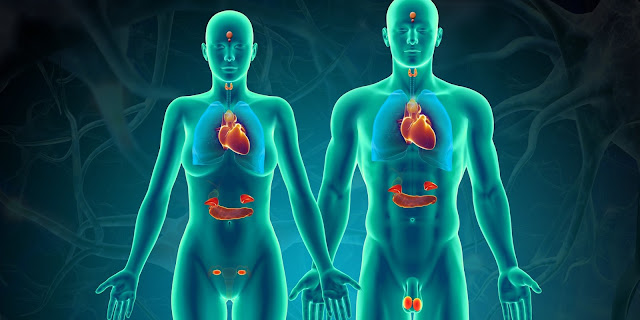Lab-on-a-chip and Microarrays (Biochip): Miniaturizing Diagnostics and Analysis
.jpg) |
| Lab-on-a-chip and Microarrays (Biochip) |
Lab-on-a-chip (LoC) refers to miniaturized devices built on a chip that can perform laboratory experiments and analysis. Also known as "micro-total analysis systems" (μ-TAS), LoCs integrate one or several laboratory functions on a single integrated circuit or microfabricated device no bigger than a few square centimeters. This drastically reduces reagents consumption and allows samples to be processed extremely quickly. Some key advantages of LoCs include portability, low sample/reagent volume requirements, fast analysis speeds, and potential for high-throughput testing.
How do LoCs Work?
LoCs leverage microfluidics technology to manipulate extremely small fluid
volumes, typically on the scale of nanoliters or picoliters, through
miniaturized fluidic chambers and channels etched onto the chip. Sample
processing like mixing, separation, and reaction occur through controlled fluid
movement and transport mechanisms. Microfabrication techniques allow
manufacture of structures as small as 1 micrometer, enabling integration of
various laboratory modules. Combining fluidics with electronics can help
automate sample preparation, analysis and readout generation from minimal
sample volumes.
Applications in Biology and Healthcare
Some areas where LoCs are being applied include point-of-care diagnostics,
environmental monitoring, drug discovery and food safety testing. In
healthcare, LoCs can perform rapid sample-to-answer tests for pathogens,
proteins and DNA/RNA outside centralized laboratories. Portable LoC devices
have been developed for detecting biomarkers related to cancer, HIV and
infectious diseases directly from patient samples. Their small size makes LoCs
ideal for testing in resource-limited settings. The defense, agriculture and
food sectors also employ biosensor-integrated LoCs for applications like
biothreat agent detection, genetic testing of plant/animal pathogens and
allergen testing in food products respectively.
Introduction to Lab-On-A-Chip and
Microarrays (Biochip)
Microarrays, also known as biochips, are collections of microscopic DNA spots
arranged in orderly fashion on a solid surface like glass, silicon, nylon or
microbeads. Each spot contains picomoles (10−12 moles) of a specific DNA
sequence and their location is known, allowing for detection of target
sequences in a biological sample. Depending on the assay, microarray spots may
contain genes, SNPs, cDNA or oligonucleotides to enable analysis of gene
expression, mutation detection or DNA fingerprinting. Microarrays are major
tools for genomic and proteomic research as they allow massively parallel
testing of large numbers of biomolecules simultaneously.
How do Microarrays Work?
In a basic microarray assay, fluorescently labeled DNA/RNA targets extracted
from a test sample are pumped over the array surface. Through Watson-Crick base
pairing, these targets will hybridize to their complementary probes/sequences
printed on the chip. The array is then scanned with a laser to detect
fluorescence at each spot - the strength of signal indicates degree of
hybridization and hence expression level of that particular sequence.
Microarrays thus generate quantitative expression profiles for thousands of
sequences in a single experiment. Comparative genomic hybridization can also be
performed to detect copy number changes between normal and diseased genomes.
Applications in Molecular Diagnostics
and Research
Since their introduction in the 1990s, DNA microarrays have revolutionized
genomic research by enabling profiling of genomes, transcriptomes and epigenomes
at an unprecedented scale. In healthcare, clinical diagnostic microarrays can
identify genetic mutations behind various disorders, screen for infectious
agents and detect chromosomal abnormalities. Microarrays have also enabled
major initiatives like The Cancer Genome Atlas for comprehensive molecular
characterization of cancer. Other areas of application include toxicogenomics,
analysis of alternative splicing and non-coding RNAs, genome-wide association
studies and microbiome analysis. Commercial microarray platforms that are FDA
approved for clinical use exist for various conditions such as cancer subtyping
and infection diagnosis.
Fundamental Differences Between Lab-On-A-Chip
And Microarrays (Biochip)
While Lab-On-A-Chip
And Microarrays (Biochip) both deal with miniaturization and parallel
analysis of biomolecules, they differ fundamentally in their designs and
operation mechanisms.
LoCs are microfabricated devices that leverage microfluidics to transport and
isolate analytes on one integrated platform, and usually enable fully automated
multi-step processing of small sample volumes. Microarrays, on the other hand,
are static devices where fluorescently-labeled targets are pumped over the
surface for hybridization-based detection of gene sequences or other
biomolecules.
LoCs are designed to perform complete laboratory experiments, mix samples,
purify components and generate readouts - essentially serving as
"labs-on-chips". Microarrays only perform detection assays and
generate expression/sequencing data without requiring additional sample
processing.
Finally, while LoCs involve real-time manipulation of picoliter volumes,
microarrays work with microliter volumes through passive hybridization of
pre-labeled samples. So LoCs represent more sophisticated lab devices whereas
microarrays are focused detection tools.
Combining the Best of Both Worlds
Researchers are actively exploring approaches to combine the strengths of lab-on-a-chip
and microarrays (biochip) for
development of next-generation precision diagnostic tools. Integrating
microarray detection platforms into LoC devices would result in fully automated
sample-to-answer systems capable of single-step pathogen identification,
disease screening, toxicology testing and clinical decision support. Some
challenges include optimizing microarray integration onto microfluidic circuits
and ensuring sufficient hybridization efficiencies. Another exciting prospect
is development of microarray-enhanced LoCs for applications like molecular
pathology, non-invasive prenatal testing and cancer liquid biopsies. Overall,
converging microfluidics with microarray detection holds tremendous promise for
accelerating healthcare diagnostics in the years to come
Get more insights on lab-on-a-chip
and microarrays (biochip)
About
Author:
Money
Singh is a seasoned
content writer with over four years of experience in the market research
sector. Her expertise spans various industries, including food and beverages, biotechnology,
chemical and materials, defense and aerospace, consumer goods, etc.
(https://www.linkedin.com/in/money-singh-590844163)



Comments
Post a Comment